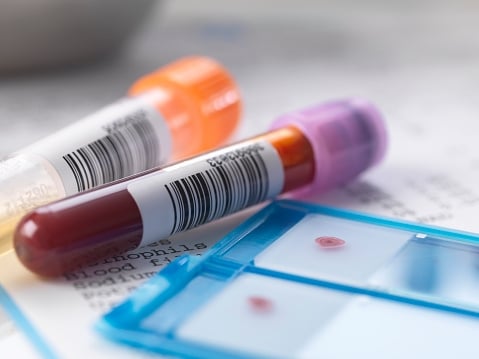You have /5 articles left.
Sign up for a free account or log in.

Getty Images
The federal government on Wednesday issued a new 543-page rule to govern the way researchers study human subjects. The new "common rule," as it is known, follows years of debate over appropriate ethics standards. And many experts in the field haven't had time to carefully study all of the regulations.
But in a major win for the associations that lobby on behalf of research universities, the final rule does not include a provision that was in earlier drafts that would have applied principles of informed consent to biospecimens, such as tissue, blood, saliva and urine. Current rules allow research to be performed using previously collected biospecimens without informed consent as long as the specimens are not linked to an individual. But earlier draft regulations would have required researchers to obtain ongoing informed consent and to track whose biospecimens were being used so that the consent could be obtained.
The fight over this issue was particularly intense in involving academics -- with university leaders and many biological scientists opposing the proposed change (and thus happy with Wednesday's outcome). Others, however, including anthropologists, had campaigned for the change.
Social scientists have also been carefully following the common rule revisions, in part out of the belief that past regulations were not designed with their types of research in mind. Leaders of social science groups report seeing some real improvements in the rules.
While some rules issued late in the Obama administration face the possibility of legislation to undo them, the discussions over the common rule have not seen partisan splits of the sort that would suggest problems for these regulations.
The Use of Specimens
The application of informed consent to specimens brings out strong views on both sides. And many blood and other specimens are used in research, sometimes well after the specimens have been collected.
Advocates for the use of these specimens without specific consent on a project-by-project basis say that certain protections are essential and are already provided. Specifically, they argue that such specimens should always be used in ways that maintain the privacy of the people whose bodies produced the specimens. But for nonidentifiable specimens, these advocates for the research say that the benefits of such research far outweigh the cost and time involved in regularly getting permission to use them.
A joint statement Wednesday from Mary Sue Coleman, president of the Association of American Universities, and Peter McPherson, president of the Association of Public and Land-grant Universities, praised the federal government for leaving out the idea of applying informed consent to ongoing use of specimens.
"That provision, by requiring ongoing consent for the use of perhaps billions of nonidentifiable human biospecimens, or tissue samples, would have forced universities to track and retain the personal information of the millions of people who had donated those samples," the statement said. "The administrative time and cost for both universities and scientists would have been enormous and would inevitably have forced reductions in vital research."
Hundreds of scientists and patients weighed in backing the university groups' position, as did a report by the National Academies, which found that "requiring consent for all research involving biospecimens … would substantially increase administrative burdens on investigators, research staff and institutions, and would markedly hinder the conduct of critical science."
Others disagreed. A popular book assigned in recent years by many colleges as a common reading assignment is The Immortal Life of Henrietta Lacks. Lacks was a poor black woman who had cells taken from her without her knowledge in 1951, and those specimens went on to play a key role in research on polio, cloning, gene mapping and many other topics. As Rebecca Skloot, the author, described the story, "Henrietta’s cells have been bought and sold by the billions, yet she remains virtually unknown, and her family can’t afford health insurance."
Skloot wrote an essay for The New York Times in 2015 endorsing the now-abandoned idea of required continued informed consent about specimens.
"Mrs. Lacks’s story is unusual because she lost her anonymity. But I’ve talked to other still-anonymous donors with strikingly similar experiences," Skloot write. "Like the Lacks family, they’re proud they helped science. They believe tissue research is important, but they wish they’d been asked permission from the start, to avoid difficulties that followed: the shock of learning they were part of research, debates over who controlled samples, questions over profits. I’ve also heard from scientists and medical professionals who believe this transparency is overdue. And patients who want to control their tissues to, say, ensure their samples are used to study only their specific rare disease."
The American Anthropological Association had urged the federal government to keep the informed-consent provision for specimens in. Edward Liebow, executive director of the association, said he thought the requirement would have been "more of a case of inconvenience" to researchers than making important studies impossible.
Liebow also noted that disputes over these issues are not only from the era of Henrietta Lacks. He cited the reactions of members of the Havasupai tribe, who in 1989 consented to give blood samples to researchers at Arizona State University for studies on diabetes, a major health problem for the tribe. Later, however, tribe members found out that the researchers used the specimens -- without tribe members' consent -- for studies of schizophrenia and migration. These are topics that tribe members didn't want studied with their own blood. Tribe members sued and eventually reached a deal in which they received $700,000 and their DNA samples back.
Needs of Social Science
Early reactions from social science groups to the changes in the common rule were positive. Various provisions suggest that institutional review boards, which must review proposals to study humans, work to understand the needs of different kinds of researchers, and that there are different levels of risk associated with taking an experimental drug and answering confidential survey questions.
A statement from Felice J. Levine, executive director of the American Educational Research Association, said, "The revised regulations definitely show the care and hard work that went into this extensive effort to modernize the common rule. An open process that began in July 2011 has led in January 2017 to regulations that are more nuanced and that far better align human research protection and social and behavioral science research, taking into consideration level of risk and benefits. It is a fine outcome for research participants and for human science."
For anthropology, the reaction was more mixed. Anthropologists pushed hard for specific mention of "participant observation" (a key tool of their discipline). The hope is that mention of this methodology will make it easier for institutional review boards to approve projects involving this approach. Sometimes in the past, Liebow said, IRB members or others have not understood that the relationship between an anthropologist engaged in participant observation isn't the same as a scholar who is interviewing his or her research subjects.
But he said that his association was "especially concerned" that the final version of the rule did not exempt participant observation, as his organization had urged.




